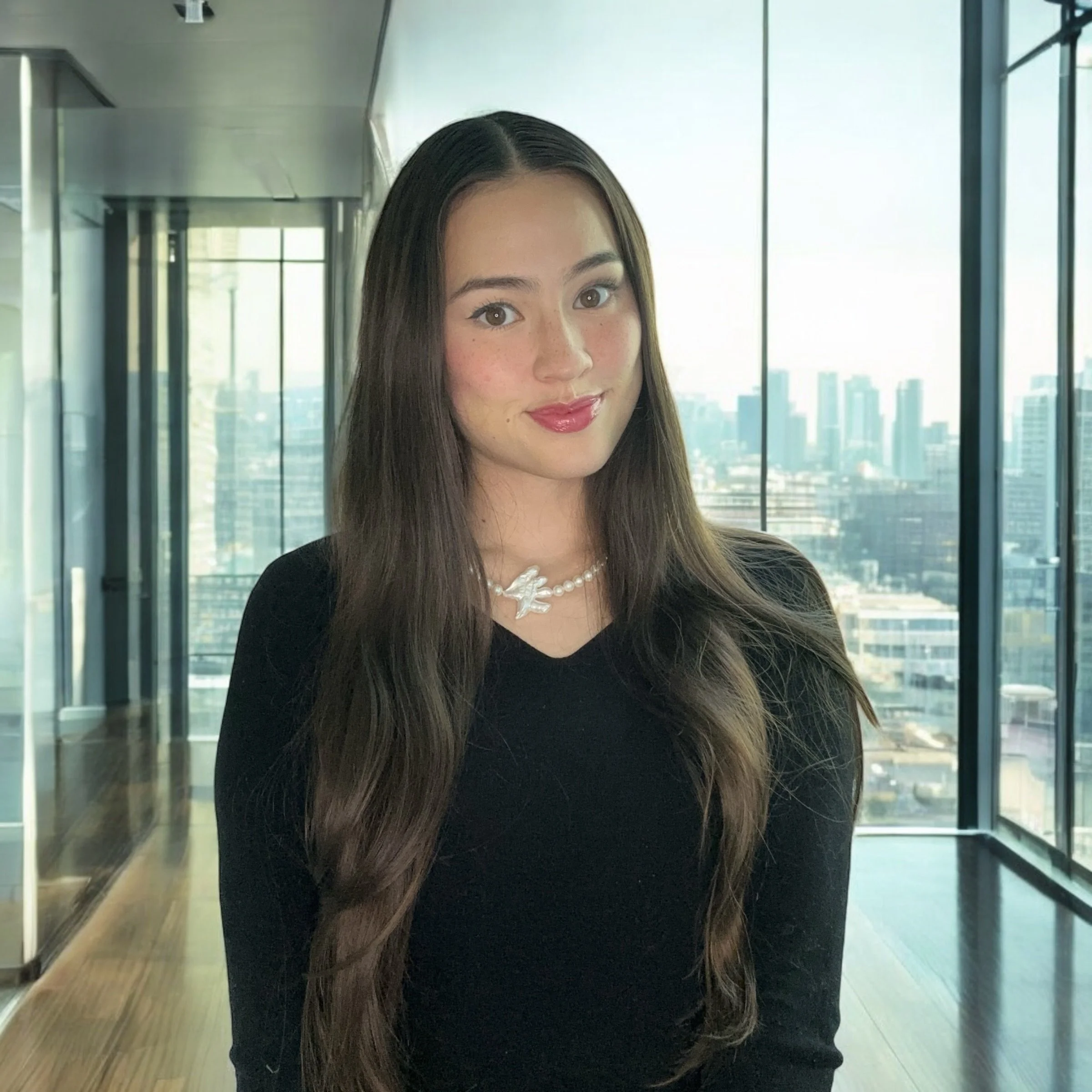Welcome to my side of the web!
My name is Marine, I was born and raised in Miami, Florida. I am a neuro-technology researcher and graduate student currently attending Columbia University, pursuing a concentration in neural engineering. As of 2025, my current research is focusing on invasive brain implants in primate models, though I maintain an interest in both non-invasive and invasive implants (See: Projects & Publications.). As a lifelong learner, I’m fascinated by what’s on the cutting edge of technology and design. In the following excerpt, you can find a little bit about my background and what drives my passion for neural engineering.
At 15, I took C++ and found my passion for coding. I began to realize that computing could unlock the future of medical care and critical biotechnology developments.
Summer of my freshman year in college, I was interning as a research engineer for Skeletal Dynamics. In this lab, we dissected and implanted cadavers with biomedical plating devices to test their efficacy in stabilizing fractures. Thanks so much to Dr. Vernon for being my mentor.
During the pandemic, when schools began to shut down, I helped my family’s cosmetics business pivot into an essential health-care business. We started producing all-natural hand sanitizer sprays from high-grade alcohol we use in fragrances to meet the overwhelming global demand. As an essential business, we were able to successfully pitch and sell our products in CVS Health, Altar’d State, and our E-commerce platforms, across the U.S.A., Mexico, & Canada. This experience was invaluable and helped develop my entrepreneurial skills within the world of medical healthcare supplies and fostered my creativity for problem solving.
Later that year, I got involved with the Boston University Mars Rover club, where we spent all year designing robots in using CAD and Arduino to compete in the annual Mars Rover University competition in Utah. I also took several Python courses, MATLAB programming for Brain Sciences and Computational Neuroscience. (See: Coursework for more info.)
I joined a Visual Neuroscience Laboratory during that same period. Big thanks to Dr. Sam Ling and especially to Jasmine Pan for being an indispensable mentor and role-model to me for the 2 years we worked together. We co-authored a paper in Nature Scientific Reports looking at the underlying roles of visual and auditory arousal in the nervous system. I also have experience in EEG head-caps, i’m able to mark node locations via the 10-20 system, as well as write up code to process various bio-signals. I am also fMRI Siemens certified and have experience analyzing fMRI brain data in humans through quantification of voxels and their eccentricity scores.
Notably, I also worked as a research assistant for the Soft Morphable Biorobotics lab under the Mentorship of Dr. Tommaso Ranzani & Leah Gaeta, big thanks to them and our team. There we prototyped a soft robotic bio-sensing starfish for recording movement and pressure stats of limbs and joints for physical therapy in athletes. I learned circuit design, CAD, working with LED’s and photoreceptors, laser cutters, eco-flex, 3D Printing and Arduino. I mentored an undergraduate for the manufacturing processes of the soft robotic starfish.
Senior year of undergrad, I also had the awesome opportunity to work with Dr. Steve Ramirez and mentor Albit Caban. This is where I was introduced to memory systems neuroscience research in mammalian models.
I went on to complete my B.A. in both Neuroscience & Psychology with Latin Honors from Boston University. Upon graduating, I became a full-time research associate at the Ramirez Group.
The Ramirez Group is a neural engineering lab specializing in manipulating learning and memory. I want to give a big thanks to both of my colleagues for their teaching expertise and continued guidance working with them for the past 2 and a half years. Here, I learned molecular bioengineering techniques, enhanced selective gene expression, stereotaxic brain surgeries, mammalian cell culture, confocal microscopy, perfusions, and injections. I also learned to handle animal models, vibratome brain slicing, staining, omics, and became familiar with Med PC boxes. I learned how to implant both fibre photometry cables and optogenetic implants. I also learned how to perform craniotomies. For our experiment, we used machine learning in Python to extract neural nets from time locked whole-brain data during a cognitive task. Extracting the mouse brain during this finite period allows us to capture the cells activity during the task and inform us on overall connectivity during the various behaviors. Our main research project looked at the evolution of appetitive vs. aversive decision making across a 7-day behavioral task and the functional connectivity that underlies this decision making in mammalian models. Our team’s focus was on the cell activity of the pre-frontal cortex, the Amygdala and the Hippocampus.
I subsequently presented my findings at Society for Neuroscience’s Annual National Convention in San Diego in 2023. I then co-authored our paper with 2 colleagues to describe changes in brain dynamics during different behaviors. which is now being published in Nature Neuroscience.
My team and I collaborated on a paper with MIT Media Lab’s Conformable Decoders team, where I helped test, implant and optimize a novel piezoelectric ultrasound stimulator device for potential management of neurodegenerative pathologies. I was acknowledged in the subsequent paper published in 2024. (See: Projects & Publications.)
I additionally offer biotechnology consultation services. I also occasionally offer private tutoring sessions for neuroscience and biology courses.
My passions and hobbies include, but are not limited to: flame-working, ballet, gardening, snowboarding, soldering, fashion design, artisanal matcha, scuba diving (certified), drawing, painting & sewing.
Let's Connect
Please do feel free to reach out if you have any questions, or want to collaborate.
